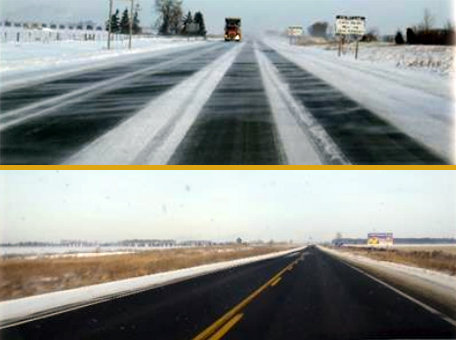Back to December 2015 Newsletter
Pollinators and the Road

Kim Fellows
One of the ideas that we put forward during the forum, which addresses a number of those categories, revolves around pollinator-friendly roadside plantings. This is a brilliant idea that emerged from the Ontario Horticultural Association’s Conservation and Environment Committee, which includes Carol Dunk, and Seeds of Diversity's chair, Suzanne Hanna, amongst other members. The committee created a very practical guide called Roadsides to help anyone establish pollinator patches, especially along roads or other unused public spaces. You may recall that our December 2013 e-bulletin featured this program.
Your pollinator patches can really make an impact if you consider using native plants that have naturally adapted to local conditions such as soils, insects, wildlife and general weather patterns. For example, tallgrass prairie plants – in addition to being pollinator-friendly plants – have a great ability to sequester carbon and are drought-resistant. Selecting plants native to your local ecosystem will best serve the pollinators in your area.
Here's an even greater benefit of establishing roadside pollinator-friendly plantings: they can serve as snow fences and windbreaks, thus increasing road safety by reducing snow drift, and decreasing topsoil erosion of adjacent lands. This topic is explored in some of the back-issues (available online) of Bluestem Banner, an electronic newsletter produced by Tallgrass Ontario.
The February 2014 issue of Bluestem Banner describes a 170-acre tallgrass prairie habitat that has been established along highway 40 in Ontario. Along with being good for pollinators and birds, linking core habitats, and providing refuge for wildlife, the roadside planting can also help save taxpayers' money by diminishing the need to plough, mow, salt and spray for weeds.
The article features two photos, taken one minute apart, on a windy day in early February 2014 (see pictures above right). In the first image (top), you can clearly see snow blowing across the road. This section lacks a prairie buffer flanking the highway. In stark contrast, the next photo (below), taken a minute later along the same route, shows a snow-free section of the road. This is the section of the highway along which the roadside tallgrass habitat has been planted.
South of the border, President Obama signed the Fixing America's Surface Transportation Act into law just two weeks ago, which includes the key provision to encourage pollinator habitat along highway right-of-ways managed by state departments of transportation. This law paves the way for 17 million acres of roadsides to provide habitat and forage to beleaguered pollinators. The act was largely due to the efforts of the Pollinator Partnership, an American non-profit agency that works for pollinator protection.
Roadside plantings of native and pollinator-friendly species provide so many benefits – for pollinators and for us. It’s time to make sure they line many more of our roads and highways.
**
Kim Fellows is Pollination Canada’s outreach coordinator.
Photo: Jake Lozon, from Bluestem Banner, February 2014.
Not yet a member?
An annual membership to Seeds of Diversity gives you access to our seed exchange, seed grow-out programs, and our online news.

We depend on donations to do our work.

Thank you for your support!
